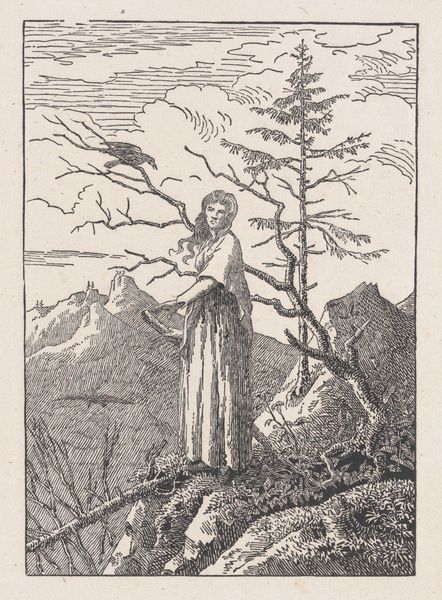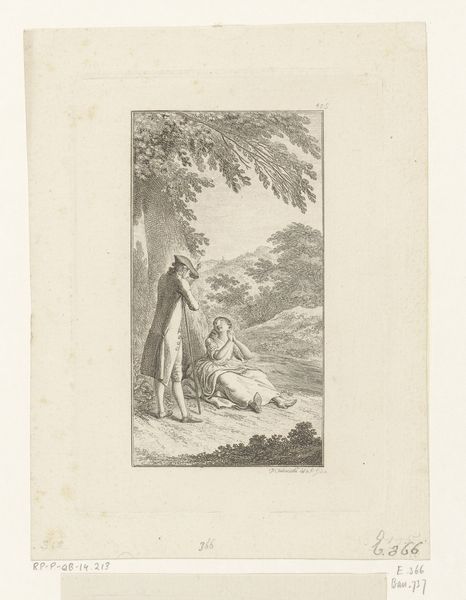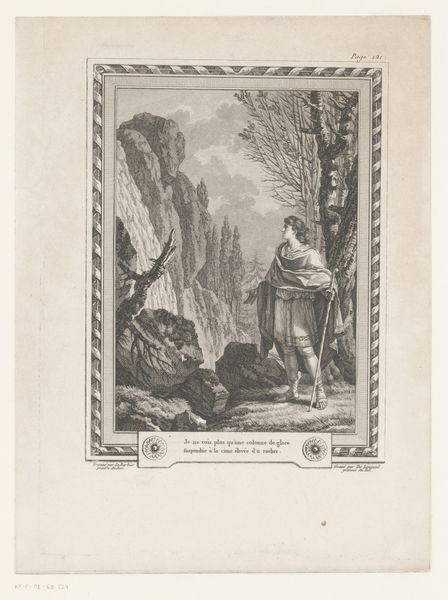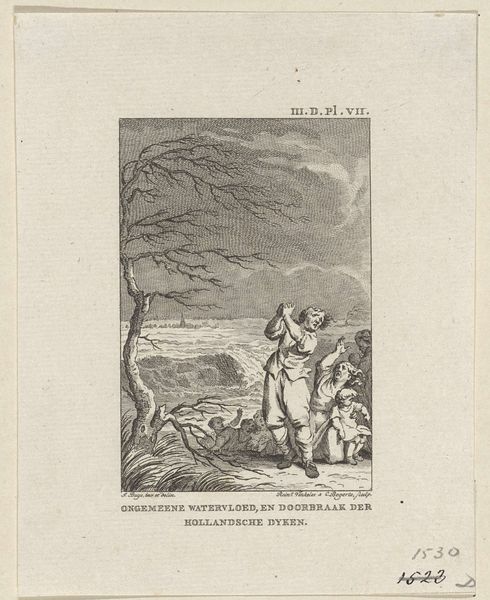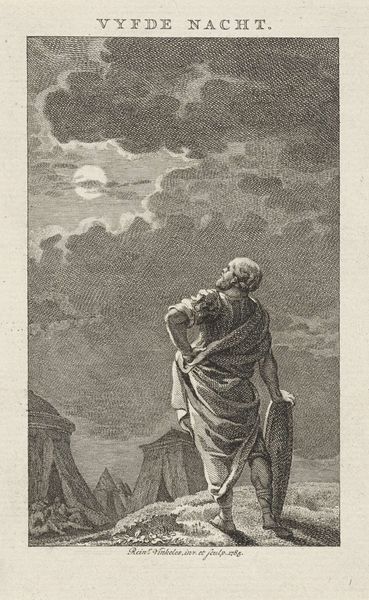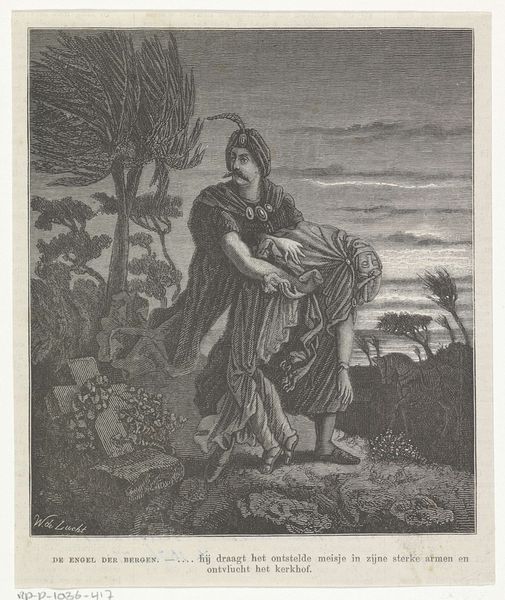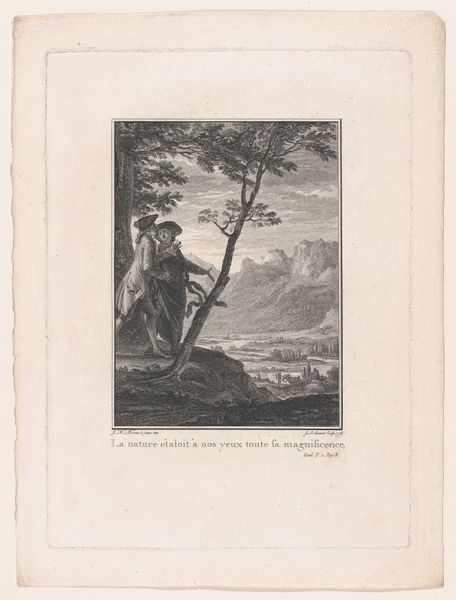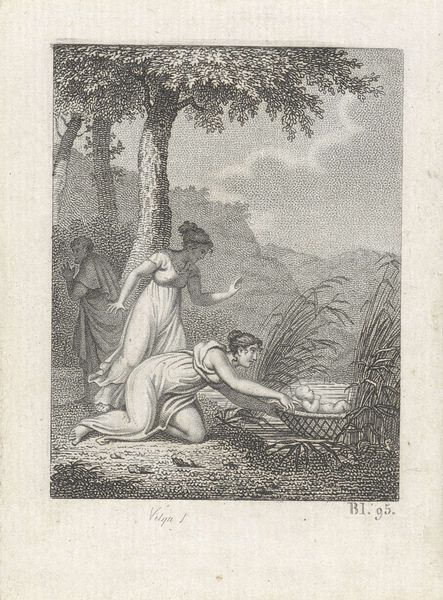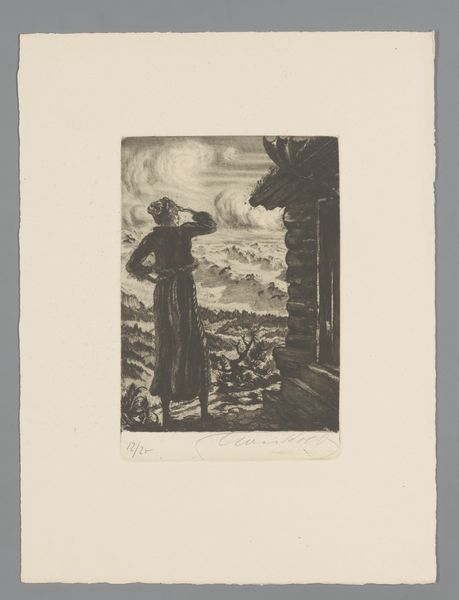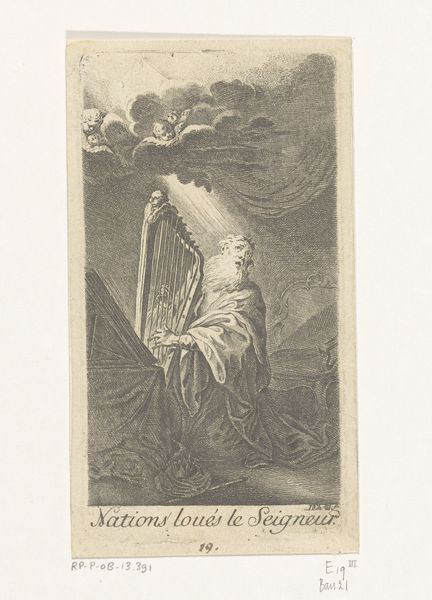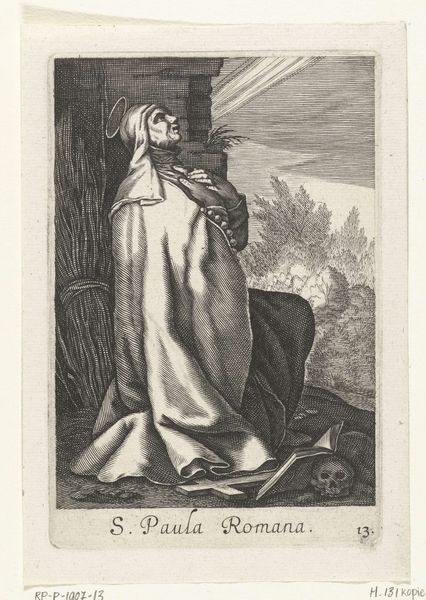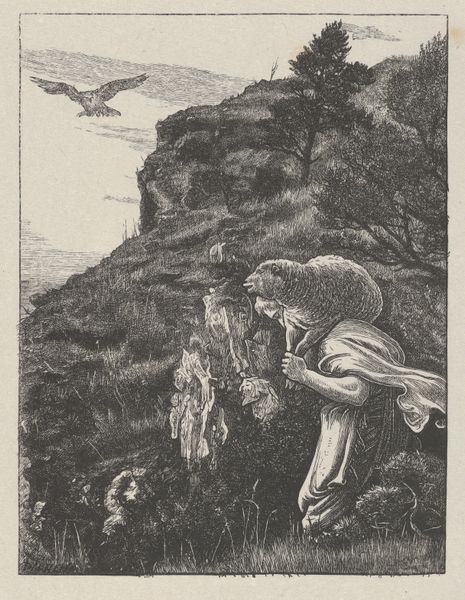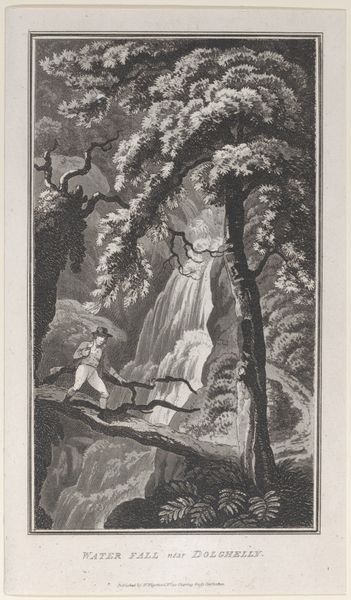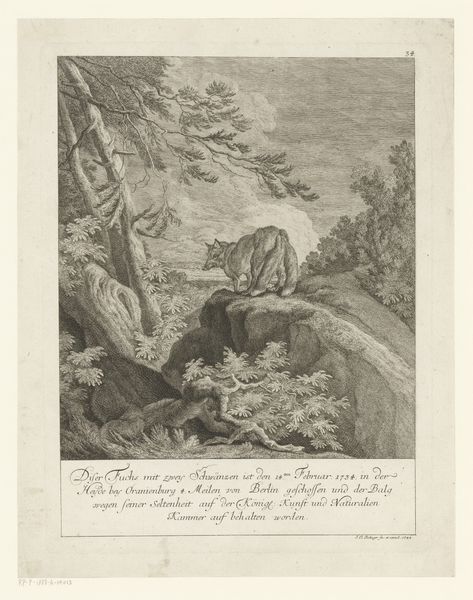
drawing, ink
#
drawing
#
landscape
#
figuration
#
form
#
ink
#
romanticism
Dimensions: height 168 mm, width 119 mm, height 245 mm, width 192 mm
Copyright: Rijks Museum: Open Domain
Caspar David Friedrich created this print, "Vrouw staand aan de rand van de afgrond en raaf," which translates to "Woman Standing on the Edge of the Abyss and Raven," without specifying the year. This print captures the Romantic era's fascination with the sublime and the individual's relationship to nature. Made in Germany, it reflects the cultural movement emphasizing emotion and the grandeur of the natural world, a contrast to the rationalism of the Enlightenment. The lone woman symbolizes human fragility against the backdrop of an awe-inspiring, untamed landscape, questioning humanity's place within the vast and indifferent universe. The raven and the abyss are also loaded with symbolism. By studying period literature, philosophy, and other artworks, we can better appreciate how Friedrich used imagery to comment on social structures and intellectual movements of his time. It reminds us that art's meaning is deeply embedded in its historical and cultural context.
Comments
No comments
Be the first to comment and join the conversation on the ultimate creative platform.
